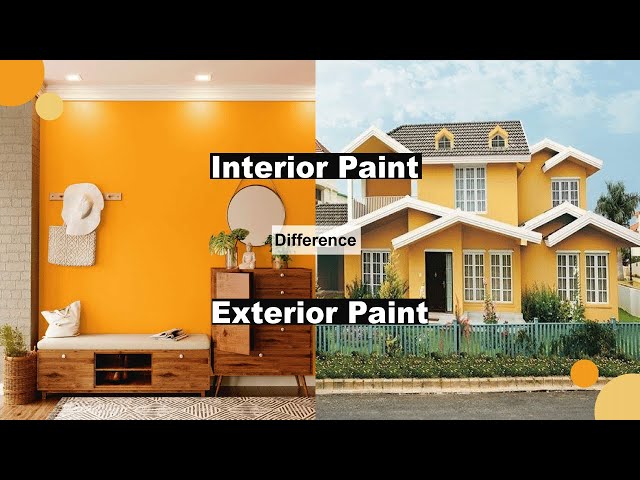Choosing the right paint for your home can make all the difference in durability, functionality, and aesthetics. This blog breaks down the key differences between interior and exterior paints, exploring their composition, functionality, and performance. Learn how to choose high-quality paints for your home and understand their impact on your renovation projects.
When you’re considering a painting project for your home, understanding the differences between interior and exterior paint is key. Both types are designed to serve unique purposes, but they differ in composition, durability, application methods, and more. In this guide, we’ll explore the important distinctions and help you choose the right paint for your next project.
Composition and Durability
Interior paints and exterior paints are formulated differently to meet specific needs. Interior paint is designed for smooth application, offering durability against scuffs and stains commonly encountered indoors. Exterior paint, on the other hand, includes ingredients to withstand weather conditions like rain, heat, and UV rays, making it a weather-resistant exterior paint perfect for the outdoors.
Additives and Functionality
Additives in paints play a significant role in their performance. Interior paints often contain additives to improve washability and resist fading caused by indoor lighting. Exterior paints are enhanced with ingredients that prevent mold, mildew, and cracking, which are vital for home renovation painting services aimed at long-lasting results.
Application and Performance
Applying paint isn’t just about brushing it on; the way it’s formulated affects the outcome. The best paint for indoor use spreads smoothly, with minimal odor and quick drying times. Exterior paint, built to handle rough surfaces and temperature fluctuations, often requires more time and effort but delivers enduring protection.
Health and Environmental Considerations
Interior paints are formulated with low volatile organic compounds (VOCs) to ensure safer air quality indoors. This makes them ideal for spaces where families spend most of their time. Exterior paints, while also improving in VOC levels, prioritize durability over indoor air safety due to their outdoor application. When considering painting techniques for home remodeling, always discuss these factors with your contractor.
Cost Implications
Cost can vary depending on the type and quality of paint. High-quality paints for homes may cost more upfront but offer better coverage and longevity, reducing long-term expenses. Exterior paints typically have a slightly higher price point due to their specialized additives and durability features, but the investment pays off with improved home protection.
Conclusion
Understanding the differences between interior and exterior paints helps you make informed choices for your home. Whether you’re tackling indoor walls or the outer façade, selecting the right product ensures better results. For expert advice and professional assistance, contact LAR Construction and Remodeling and bring your painting project to life with confidence.

